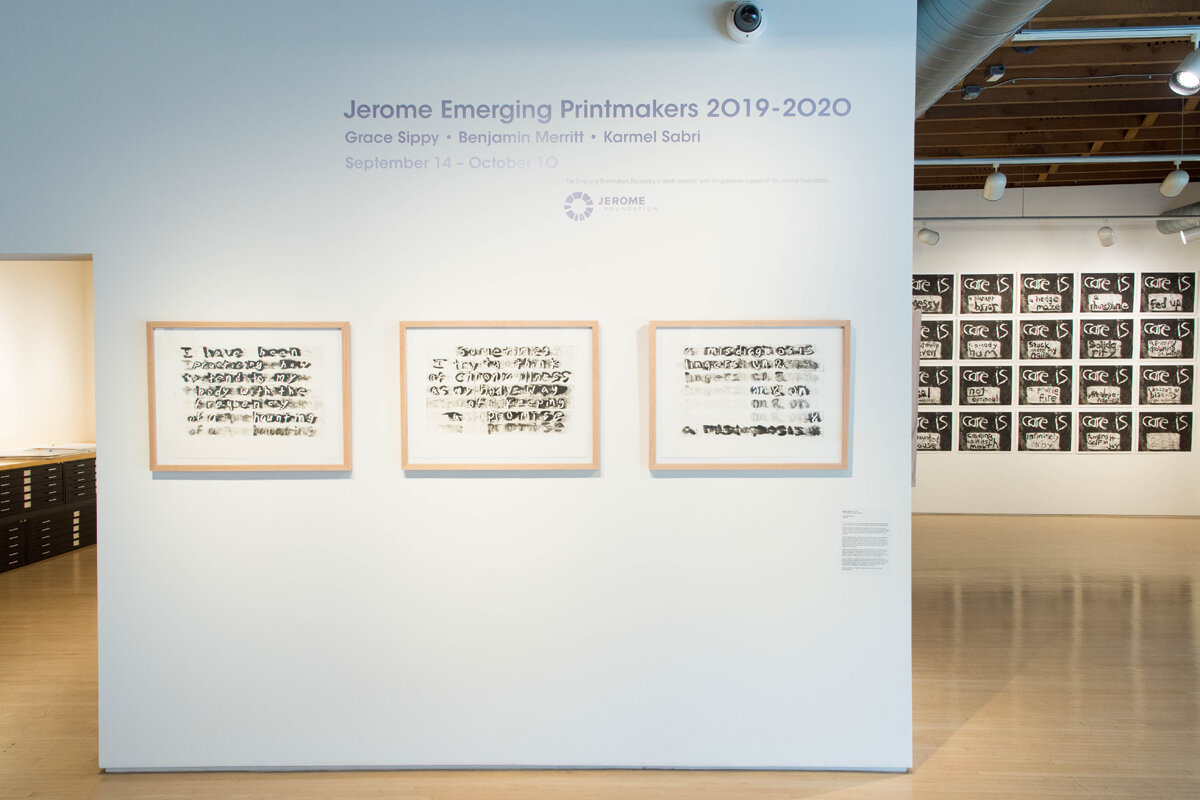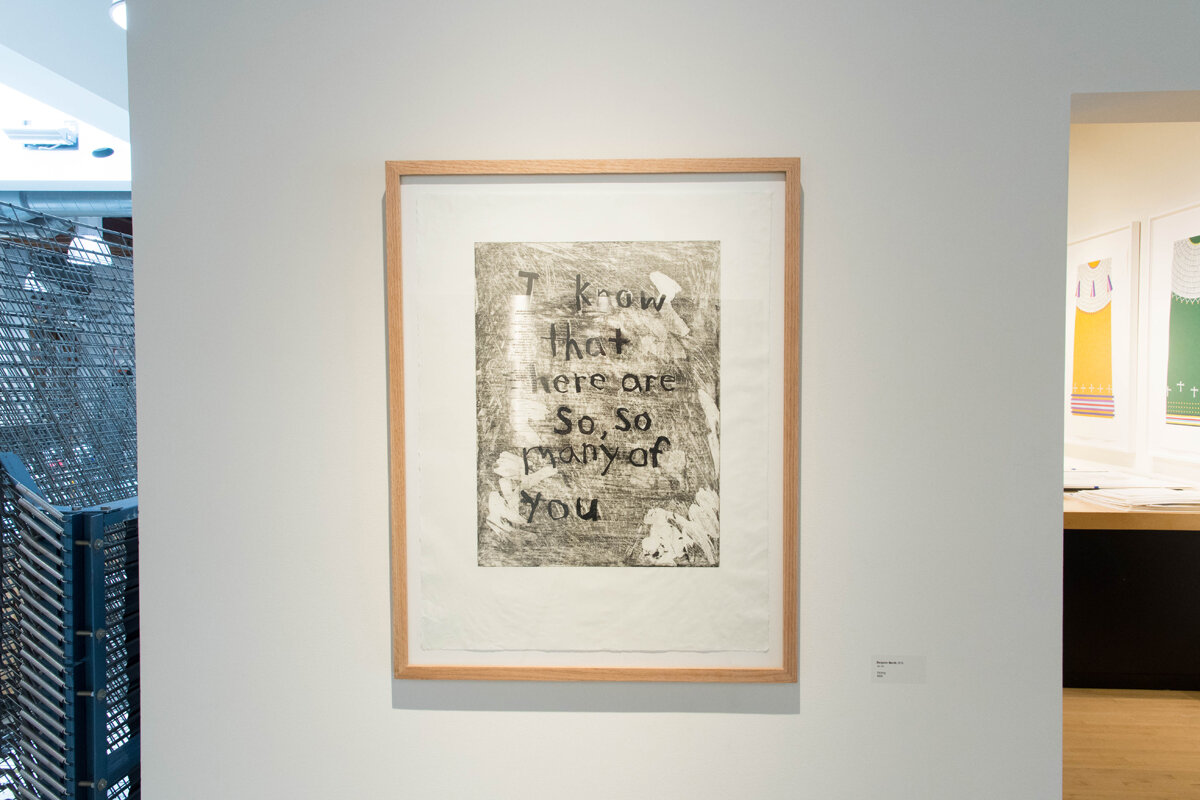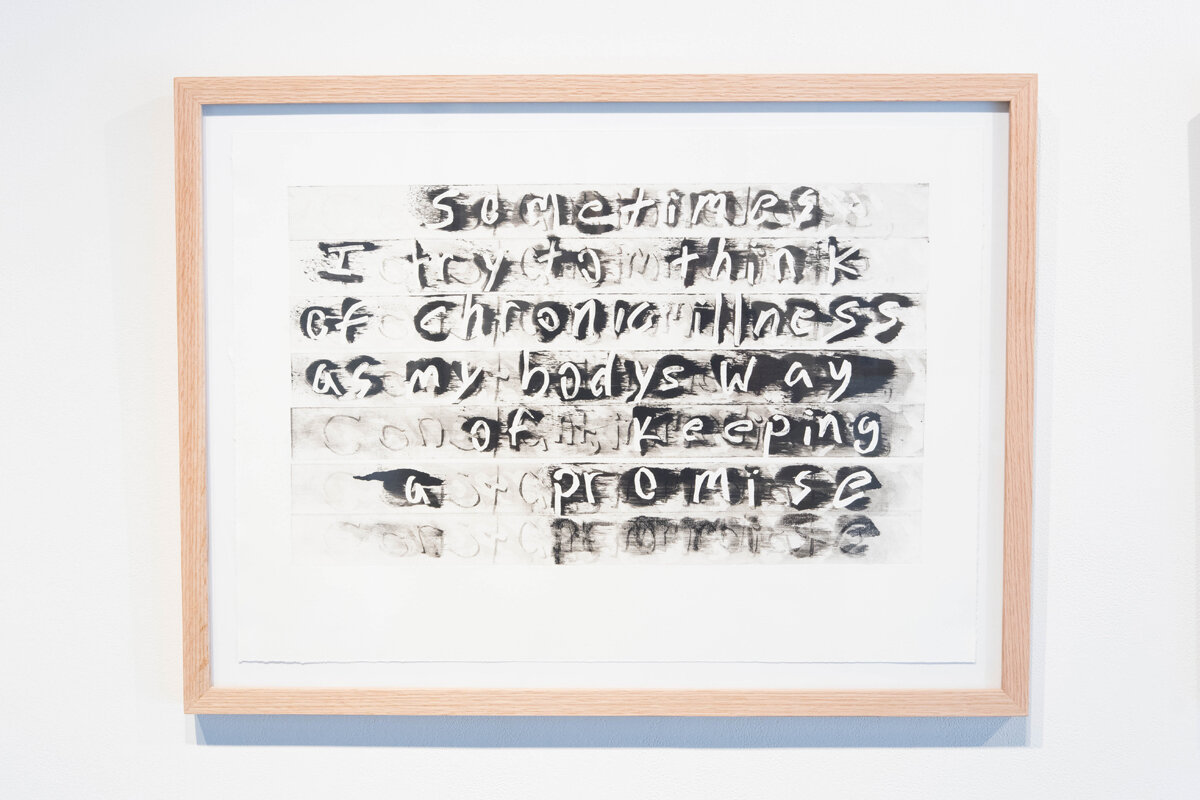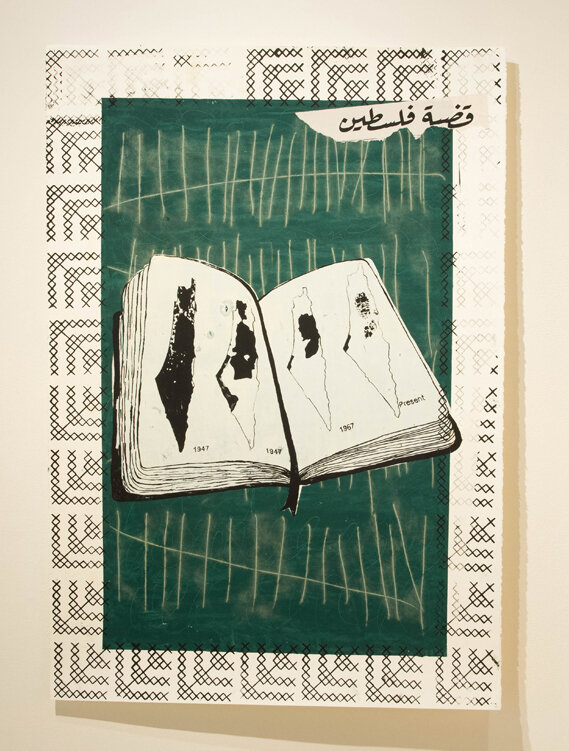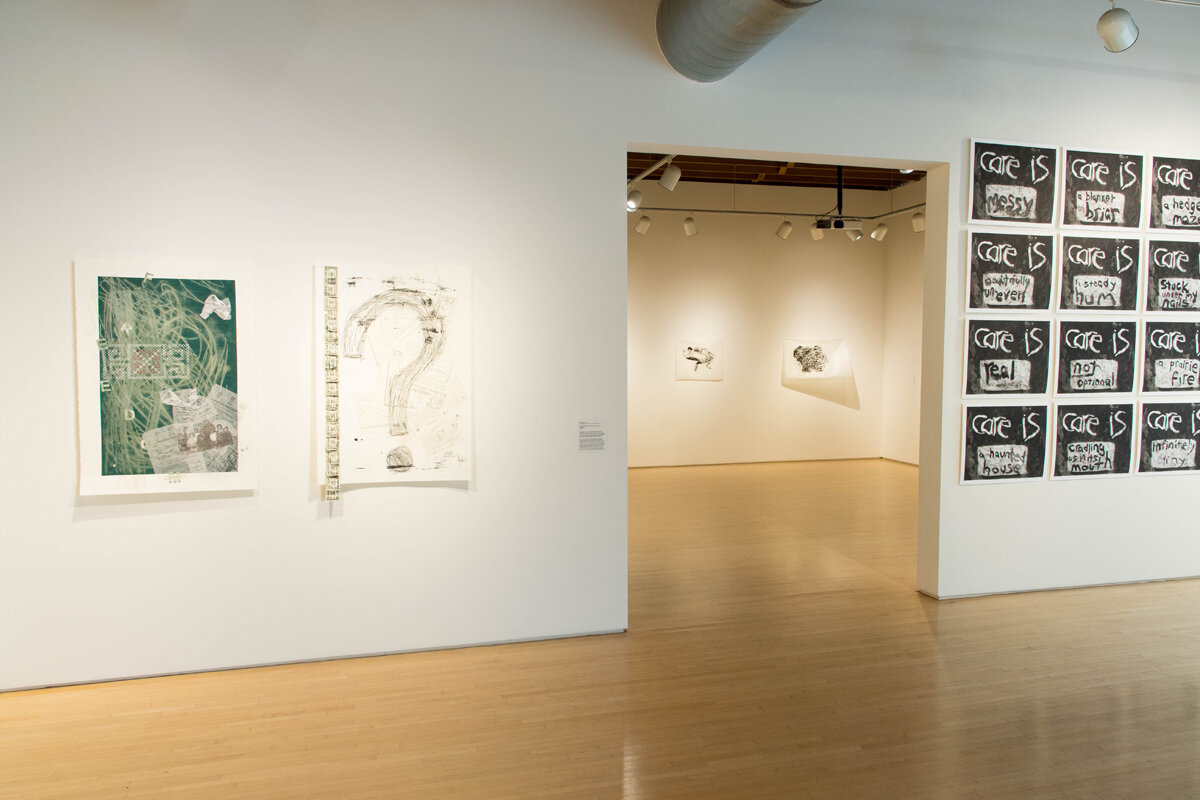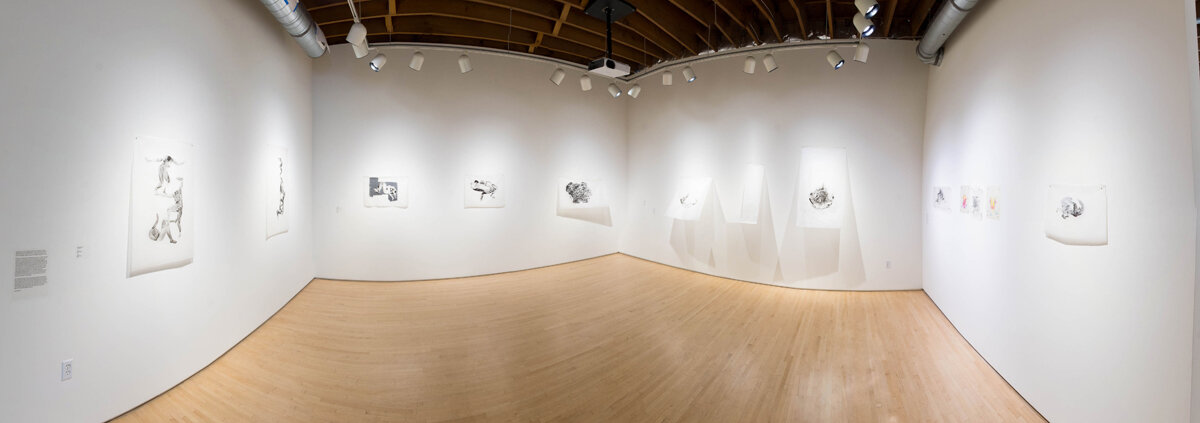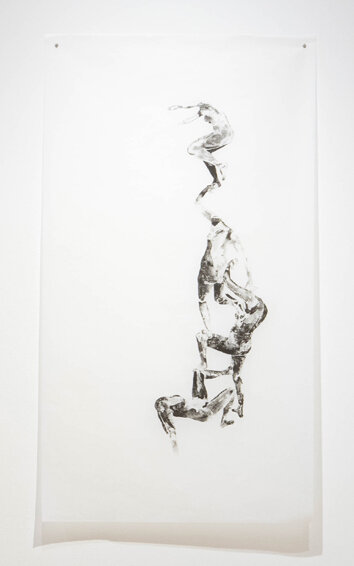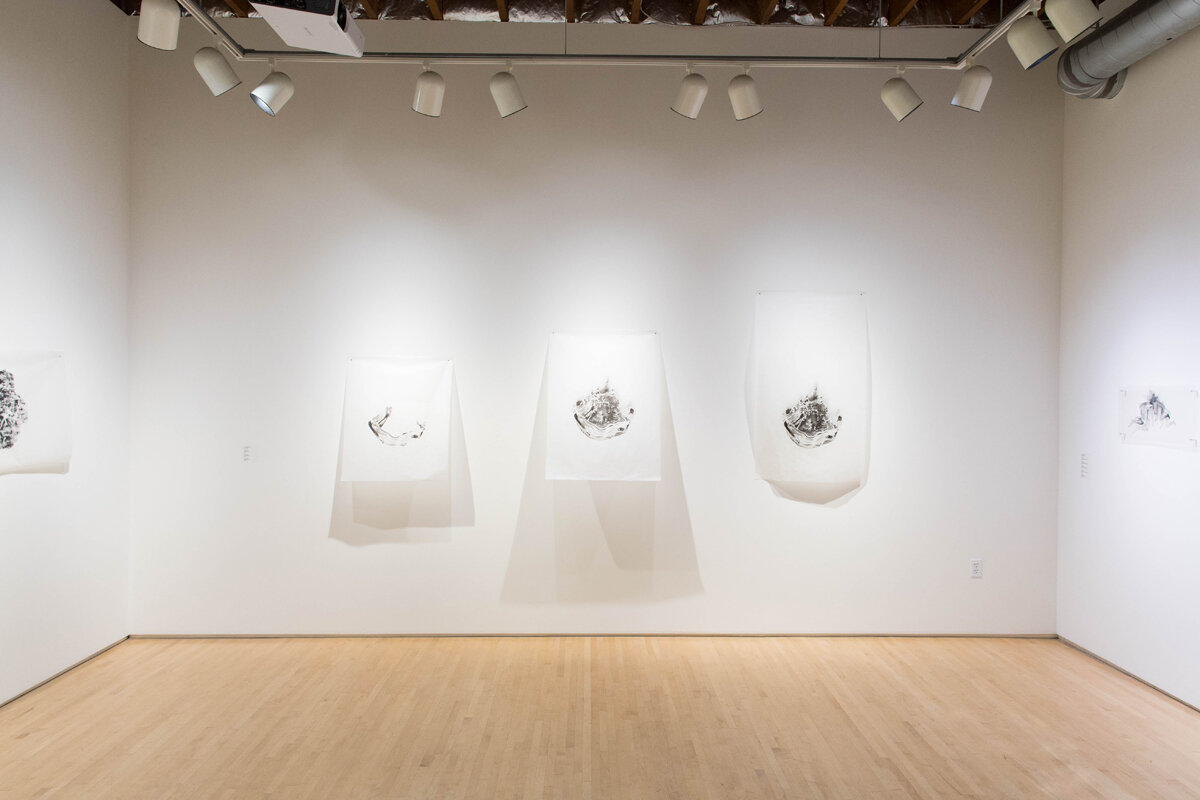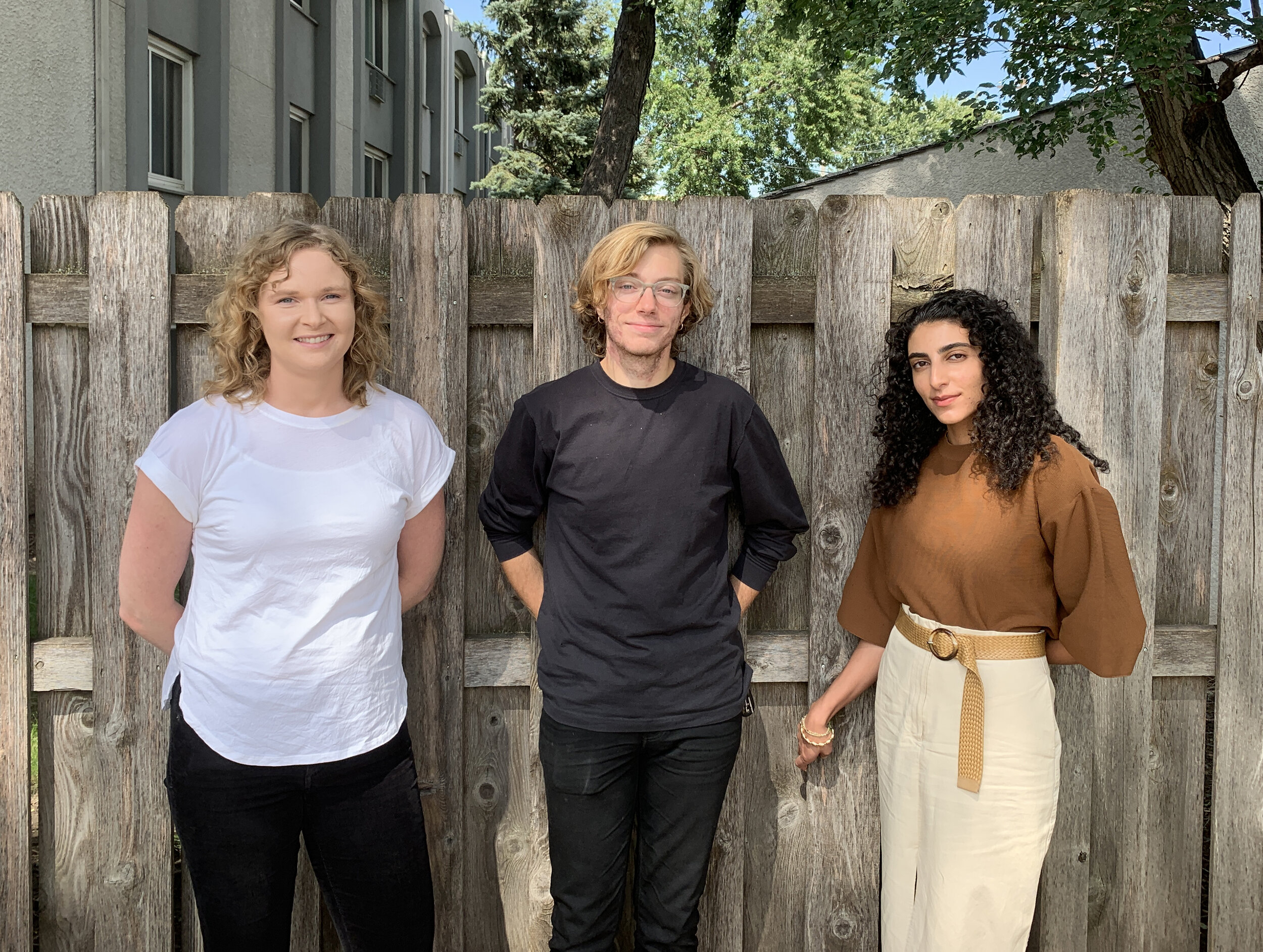Grace Sippy, Benjamin Merritt, Karmel Sabri
On View: September 14 - October 10
Grace Sippy, Benjamin Merritt, Karmel Sabri
In August 2019, invited jurors Keisha Williams (Contemporary Art Department Curatorial Assistant and Artist Liaison, Minneapolis Institute of Art) and Bryan Ritchie (Professor of Art, University of Wisconsin-Stout) selected Karmel Sabri, Benjamin Merritt, and Grace Sippy as the 2019-2020 Jerome Emerging Printmakers. This was our offering the program funded by a generous grant from the Jerome Foundation. The residency is open to emerging Minnesota printmakers — defined here as artists who show significant potential, yet have not received a commensurate amount of professional accomplishment or recognition regardless of age or recognition in other fields.
The residency was running along smoothly until the middle of March when the pandemic abruptly forced Highpoint to close. The unexpected closure lasted until July and the Residency exhibition had to be postponed. The good news is that the Jerome Emerging Printmakers Exhibition will be Highpoint’s first public exhibition since we shut down in March. The exhibition will be on view beginning Monday, September 14 and will run through October 10.
Here’s what you can expect to see from the artists:
Benjamin has created a body of work that originates from a love of language and a need to communicate what living with a chronic illness entails. He uses the etching processes to reflect on the continually changing nature of chronic illness. Benjamin is able to scrape, manipulate, scar, and erase on the copper, leaving a collection of marks in the resulting printed image that reveal the history of the plate. He also implements monoprinting techniques in much of the work, creating a play between the stagnant, repeated etching and the fluid monoprint.
More recently, through the COVID-19 pandemic, his thinking about the role of care in our society has manifested in his work. His personal relationship to care is that which he receives in treatment for a chronic illness, as well as his own employment in the care industry. Similarly to the work about chronic illness, he is interested in highlighting how complicated and multifaceted care can be, the importance and necessity of understanding the subtleties of healthcare that are often overlooked in America.
During this challenging and unstable year, Karmel pushed her aesthetic boundaries by playing with color and texture while channeling printmaking and embroidery into a therapeutic method of expressing the pain and frustration of intimate generational and personal traumas. The title of this body of work “The Question of Palestine” relates geopolitical relations between the US, Palestine, and Israel to personal experiences. Layering legal documents, personal stories, and found materials with bold colors and sharp, organic gestures, Karmel connects themes of resistance and resilience.
Grace developed a large series of simultaneously delicate and weighty figurative studies that she turned into photolithographs and screenprints. The lightweight, translucent paper they are printed on further enhances their aura of fragility. Grace uses the figure to explore what cannot be said, or what she does not wish to say through words, and regularly visits themes of disintegration, doubles, the Grotesque, vulnerability, and conflict. Grace's creative methodology begins with photography; using herself or her husband as a model. She makes sketches from the photographs and then toner drawings (on mylar) based off the sketches. The toner drawings are used as films to make screens and photolithographic plates, from which prints are finally made. She will be exhibiting these finalized prints, and possibly some of the toner drawings they are made from.
In November Bryan Ritchie visited Highpoint and Dyani White Hawk was here at the beginning of January to conduct in-progress critiques with the residents. Tricia Heuring joined the residents for another critique at the end of February and in August, Keisha Williams met with the Residents to advise them on the layout of their exhibition.




